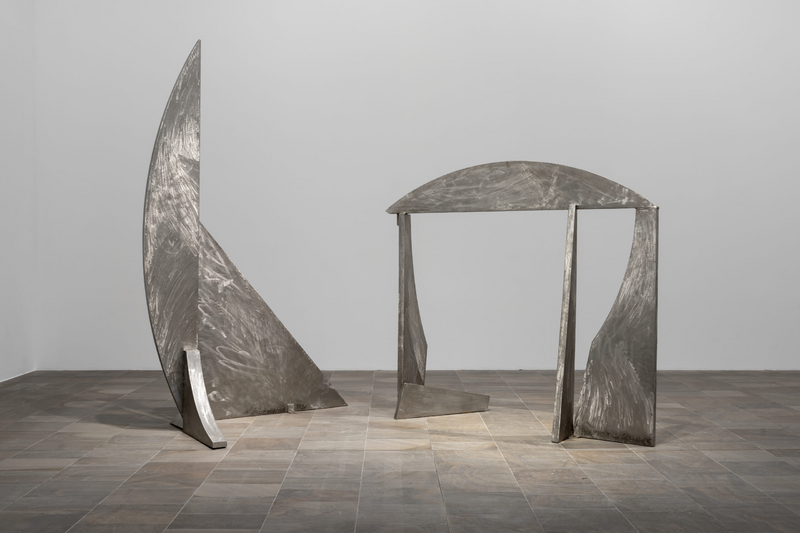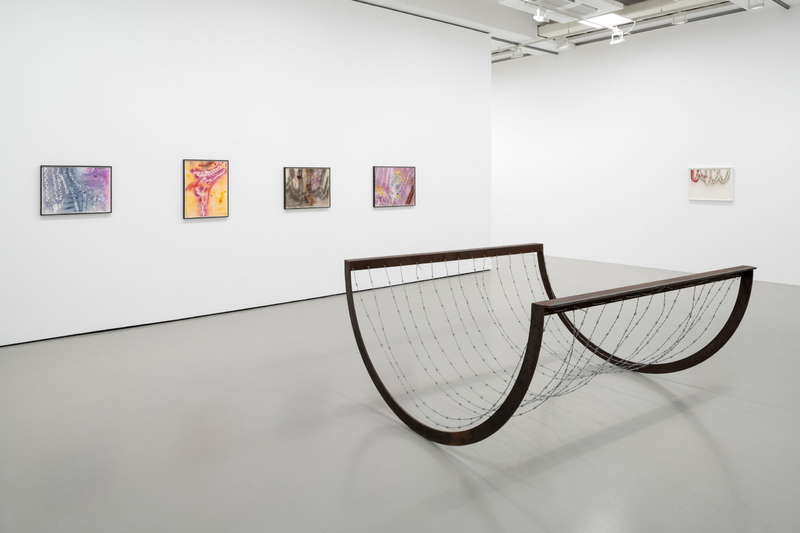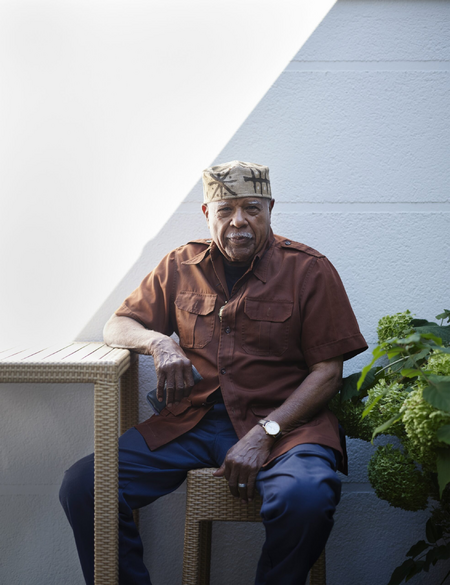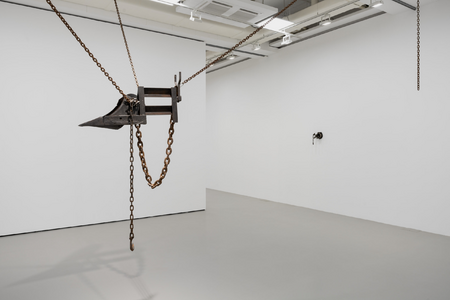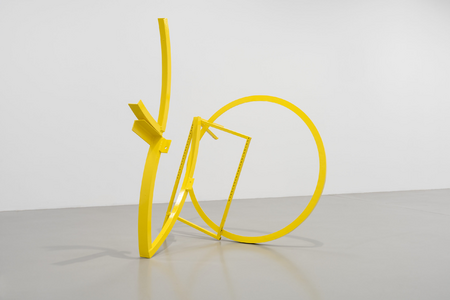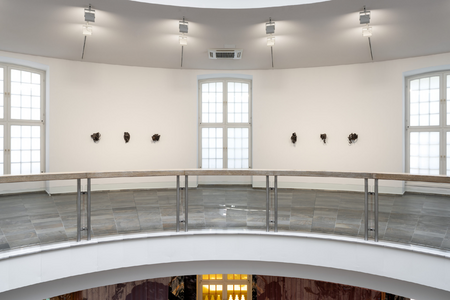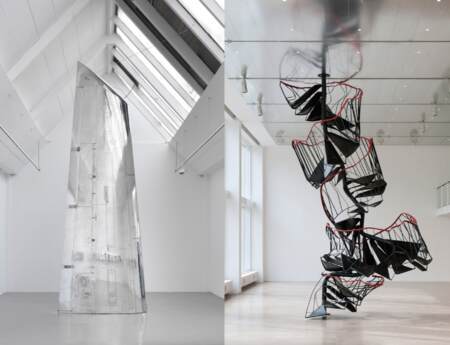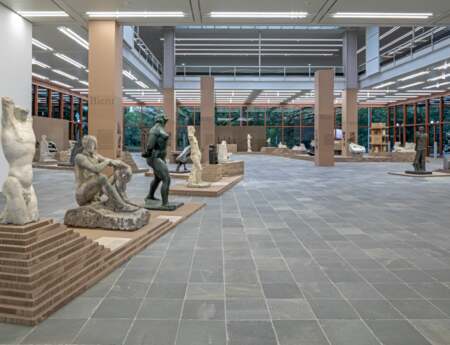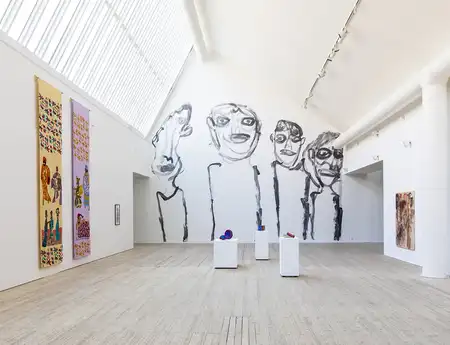Fridericianum
Friedrichsplatz 18
34117 Kassel
Deutschland
MELVIN EDWARDS: SOME BRIGHT MORNING
Under the title Some Bright Morning, the Fridericianum is presenting the first extensive solo exhibition by Melvin Edwards at a European institution. Featuring over 50 works, the show offers the opportunity to get to know the diverse abstract language of form of this sculptor, installation artist, and draftsman.
Opening: Friday, August 30, 2024, 7 pm
Children’s vernissage: Friday, August 30, 2024, 5.30–7 pm
With vegan BBQ and music
With a forward-looking approach to the questions, practices, and forms of modernism, Melvin Edwards established a body of work in the early 1960s that captivates with its great individuality and rigor. His oeuvre includes wall-mounted reliefs—the Lynch Fragments—barbed wire installations, freestanding sculptures, and works on paper. Although the works of Edwards, born in Houston, Texas, in 1937, are sited in the realm of abstraction, they allude to tangible points of reference. They evoke thoughts, feelings, and images that are linked to that historical context of the United States of America, from which the Civil Rights movement of the 1950s and 1960s emerged. Edwards’s works can therefore be read as an expression of a political engagement—a protest against racial injustice that has not lost its urgency in the present day and one that, for the artist, can be transposed onto other parts of the world, including different regions of Africa and Central and South America.
Artistic Beginnings and the First Central Series
During his childhood and youth, spent in Texas and Ohio, Edwards experienced the effects and extent of the racial segregation. After graduating from high school, he moved to California in 1955. There, at the University of Southern California in Los Angeles, he began his in-depth exploration of the arts, in particular painting. At the same time, he lived out his passion for American football. By the artist’s own accounts, his strong physical connection to sports was a major factor in his increasing focus on sculpture over time. In 1960 he learned the techniques of welding, which he deployed as a central part of his artistic production from then on. After a long period of experimentation and research, he finally arrived at a sculptural formulation in 1963, which became the essential starting point of his work. He created the first work in the extensive series he would later call the Lynch Fragments: a small relief-like wall object that he welded together from various scraps of metal, flat plates, a chain, and a tubular element. The pointed, bladelike triangular shapes, the rawness and heaviness of the material, and the rough traces of welding give the work a powerful presence. Despite the illegibility of the object, it appeals directly to the viewer’s imagination. This intense effect evoked by the early wall relief is the common thread running through all Lynch Fragments, that—with interruptions from 1967 to 1972 and from 1974 to 1977—significantly mark Edwards’s oeuvre and that are represented in the Fridericianum by thirteen selected examples. Edwards’s specific use of language, through which he references historical events, places, or people, can be seen as another key characteristic of the series of works. For instance, the title of Some Bright Morning (1963), the programmatic first wall object, refers to an episode from Ralph Ginzburg’s 1962 publication 100 Years of Lynchings that documents the self-defense of a Black family against racially motivated violence.
Other Groups of Works
In 1967 Edwards relocated to New York, where he had already made his first contacts in previous years. For the young artist, the move gave him the opportunity to explore new creative avenues. He began using barbed wire as a working medium, which formed the basis of another important group of works. A highlight in Edwards’s exploration of the material was a presentation at the Whitney Museum of American Art in New York (1970)—the first solo exhibition of an African American sculptor at this institution. The show comprised four expansive installations that in part referred to the concerns and forms of minimal art. For the work Corner for Ana (1970), for example, Edwards stretched almost forty sections of barbed wire between two walls at right angles to each other, thereby defining a prism-shaped space within the existing architecture. Despite the visual delicacy and lightness of the setting, the installation conveyed a sense of solidity, danger, and violence. Just how clearly, or rather drastically, Edwards’s barbed-wire installation impacts viewers can be seen in the formulation of “Look through minds mirror distance and measure time”—Jayne Cortez (1970)—also shown at the Whitney Museum of American Art—which along with two other examples from the group of works is part of the Fridericianum exhibition. Consisting of a voluminous curved wire formation projecting from the ceiling far into the room, the work’s loose, airy, billowing form invites viewers to approach it, while its sharp material forces them to keep their distance.
While Edwards’s installations exude a brute force and bleakness that allude to reality referencing the younger approaches, from Cady Noland to Cameron Rowland, the artist’s works on paper often evoke an entirely different mood. Created from 1970, these are marked by the use of intense, bright color, while the forms and structures characterizing them sometimes resemble garlands or ornaments. The works are based on the silhouettes of barbed wire, chains, and grids, which he transfers onto the paper using spray paint and watercolor, thus using his sculptural materials as a stencil. The potential of threat and violence is counteracted by the cheerful atmosphere of the painterly compositions, to which an entire room is dedicated in the Fridericianum.
Forming another key component of Edwards’s oeuvre are the sculptures that are positioned freely in the exhibition space. He has created these works, which take a variety of forms, since the beginning of his career and. They range from complex minimalist settings like Homage to the Poet Léon-Gontran Damas (1978–81) to colorful works such as Tan Ton Dyminns (1974) and Felton (1974), kinetic works such as Coco Vari Providence (2017), and colossal stainless-steel sculptures like Adeoli Goacoba (1988) and Poetic Juxtaposition (2019). No matter the form, Edwards’s constructions—with their numerous references to geography, society, and history—function as monuments, critical reflections, and bearers of messages for the future. This characteristic of the works was significantly refined in 1970 when he began to travel to the African continent, even establishing a studio in Dakar in 2000. His visits there nuanced his awareness of Africa and the African Diaspora, helped him to establish different networks, and heightened his sociopolitical sense of responsibility. Along with his enthusiasm to continually broaden his artistic language, these provided a key driving force for his creativity.
The Exhibition in Kassel and Its Context
The show at the Fridericianum, featuring over 50 of his works, marks Edwards’s first comprehensive institutional solo exhibition in Europe. It is being conceived in cooperation with Kunsthalle Bern and Palais de Tokyo, Paris, with each of the two venues presenting different tributes to Edwards’s work in 2025 and 2026. The museum presentations in Germany, Switzerland, and France follow on from a series of exhibitions showcasing the artist in the recent past. For instance, Edwards has been presented to a wider public at Dia:Beacon in New York (2022), the deCordova Sculpture Park and Museum in Lincoln (Massachusetts) (2022), with the support of the Public Art Fund in New York (2021), at Museu Afro Brasil in São Paulo (2020), Museu Nacional da República in Brasilia (2020), Museu de Arte Moderna da Bahia in Salvador (2019), Museu da República in Rio de Janeiro (2019), Museu de Arte de São Paulo (2018), the Columbus Museum of Art (2016), Zimmerli Art Museum in New Brunswick (New Jersey) (2015), and the Nasher Sculpture Center in Dallas (2015). Irrespective of these presentations, the exhibition in the documenta city of Kassel also evokes Edwards’s participation in the 56th Venice Biennale entitled All the World’s Futures (2015) and the group presentation Postwar: Art Between the Pacific and the Atlantic, 1945–1965 at Haus der Kunst in Munich (2016), which were curated by Okwui Enwezor.
The exhibition is being generously supported by the Stiftung Stark für Gegenwartskunst, the Hessian Cultural Foundation, and the Rudolf Augstein Stiftung.
